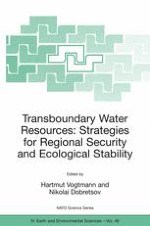After the sovjet era and since their independence the new Central Asian countries are rebuilding a system of water resources management: an important challenge for the development of the whole region. The NATO workshop held on 25-27 August 2003 by the Federal Agency for Nature Conservation, Germany and the Siberian Branch of the Russian Academy of Science, attended by experts from five Central Asian countries, Russia, six Western European countries, the US and the UNEP offered water engineers and nature scientists as well as economic and political scientists and practitioners from water administrations and international river commissions to meet in Novosibirsk and develop sustainable approaches in the management of Central Asian water resources.
This book presents important aspects of transboundary water resources, i.e. the global water crisis: problems and perspectives; regional experiences in solving water problems in Central Asia; problems and management of transboundary water resources; ecological and economic aspects of water management; scientific analysis and tools of water changes; strategic implications of water access arisen during the workshop.
A final recommendation in the area of equitable sharing of benefits, monitoring and data collection as well as proposals for Central Asia transboundary waters programme were set in the book as the main result of the meeting.
